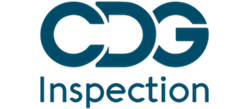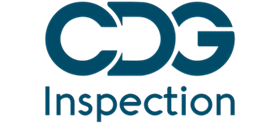Introduction
In the landscape of pharmaceutical and biopharmaceutical industries, ensuring product quality, patient safety, and regulatory compliance are of paramount importance. Regulatory bodies around the world establish guidelines and requirements to ensure that medicinal products are manufactured, stored, and distributed in a manner that guarantees their quality, safety, and efficacy. One critical framework that governs the manufacturing of medicinal products in the European Union (EU) is the EU Good Manufacturing Practice (GMP) regulations. These regulations lay the foundation for maintaining high standards in the production and distribution of medicinal products. Central to the enforcement of these standards are EU GMP audits, which serve as a mechanism for evaluating compliance with these regulations. In this comprehensive analysis, we delve into the connection between EU GMP audits and regulatory compliance, examining their significance, processes, and implications for the pharmaceutical industry.
EU GMP Regulations: Foundation of Quality Assurance
The EU GMP regulations are a set of guidelines designed to ensure the quality and safety of medicinal products across the EU. These regulations are grounded in the principles of good manufacturing practices, aiming to minimize the risks associated with the production, distribution, and use of medicinal products. The EU GMP regulations cover a wide range of aspects, including facilities, equipment, personnel, documentation, quality control, quality assurance, and more. The overarching goal is to create a robust system that ensures consistent product quality, minimizes the potential for errors, and protects patient safety.
EU GMP Audits: Enforcing Compliance
EU GMP audits are an integral part of the regulatory framework, serving as a mechanism to assess whether pharmaceutical manufacturers adhere to the guidelines outlined in the EU GMP regulations. These audits are typically conducted by competent regulatory authorities or authorized third-party organizations. The primary objective of an EU GMP audit is to evaluate the level of compliance of a pharmaceutical manufacturer’s operations, facilities, and processes with the established EU GMP standards. Audits involve comprehensive assessments of various aspects of manufacturing, including facilities, equipment, personnel training, documentation practices, quality control procedures, and more. The audits are conducted with a focus on identifying any deviations from the established standards and recommending corrective actions to address those deviations.
Key Elements of EU GMP Audits
1. Facility and Equipment: EU GMP audits thoroughly examine manufacturing facilities and equipment to ensure they meet the required standards for cleanliness, functionality, and suitability for their intended purposes. This includes assessing aspects such as facility design, environmental controls, and maintenance practices.
2. Documentation Practices: Accurate and comprehensive documentation is crucial in pharmaceutical manufacturing. EU GMP audits scrutinize documentation practices to ensure that records are complete, accurate, and readily available. This includes batch records, standard operating procedures (SOPs), and other relevant documentation.
3. Quality Control and Quality Assurance: Auditors assess a manufacturer’s quality control and quality assurance systems to verify their effectiveness in ensuring product quality and patient safety. This involves evaluating processes for testing, sampling, and releasing products, as well as mechanisms for addressing deviations and non-conformances.
4. Personnel Training: The competence and training of personnel are critical factors in maintaining product quality and safety. EU GMP audits evaluate the training programs and qualifications of personnel involved in various stages of manufacturing.
5. Change Control and Deviation Management: Changes to manufacturing processes, equipment, or facilities can impact product quality. Auditors review change control procedures and how deviations from established processes are managed and addressed.
6. Risk Management: Assessing and mitigating risks associated with manufacturing processes is an essential component of EU GMP compliance. Auditors examine whether manufacturers have implemented risk management strategies to identify and address potential risks to product quality.
7. Validation and Qualification: Manufacturers are required to validate and qualify critical processes and equipment. EU GMP audits assess the validation and qualification protocols to ensure that these processes are carried out effectively and meet regulatory requirements.
Implications of Non-Compliance
Non-compliance with EU GMP regulations can have serious consequences for pharmaceutical manufacturers. These consequences extend beyond regulatory penalties and fines. The integrity of the medicinal products and patient safety are at stake. Instances of non-compliance can result in product recalls, supply chain disruptions, damage to reputation, and legal liabilities. Moreover, regulatory agencies have the authority to suspend or revoke manufacturing licenses, effectively halting production until compliance is achieved. Thus, the implications of non-compliance underscore the critical role of EU GMP audits in maintaining regulatory compliance.
Benefits of EU GMP Audits
While EU GMP audits are often viewed as regulatory requirements, they offer several benefits to pharmaceutical manufacturers and the industry as a whole:
1. Quality Assurance: EU GMP audits contribute to the assurance of product quality by identifying deviations and deficiencies early in the manufacturing process. This proactive approach helps prevent the release of substandard or unsafe products into the market.
2. Continuous Improvement: Audits provide manufacturers with insights into areas that require improvement. By addressing deficiencies, manufacturers can refine their processes, enhance their quality systems, and ultimately increase operational efficiency.
3. Global Acceptance: Demonstrating compliance with EU GMP regulations through successful audits enhances a manufacturer’s reputation and can facilitate international market access. Many countries and regions recognize the importance of EU GMP standards and may accept audit results as part of their own regulatory assessments.
4. Patient Safety: Ultimately, the primary beneficiary of EU GMP audits is the patient. Ensuring that pharmaceutical products meet rigorous quality standards safeguards patient health and safety.
5. Regulatory Alignment: Maintaining compliance with EU GMP regulations ensures alignment with the regulatory expectations of the European Medicines Agency (EMA) and other competent authorities. This alignment is crucial for obtaining and retaining marketing authorizations for medicinal products.
Conclusion
In the realm of pharmaceutical manufacturing, EU GMP audits and regulatory compliance are tightly intertwined. The EU GMP regulations provide a robust framework for ensuring the quality, safety, and efficacy of medicinal products, while audits serve as the means to assess adherence to these regulations. The comprehensive evaluations conducted during audits cover various facets of manufacturing processes, facilities, and systems, with the goal of identifying deviations and recommending corrective actions. The significance of maintaining compliance with EU GMP regulations extends beyond avoiding regulatory penalties; it encompasses product quality, patient safety, and the reputation of pharmaceutical manufacturers. Through successful audits, manufacturers not only demonstrate their commitment to quality but also contribute to the advancement of the pharmaceutical industry by adhering to globally recognized standards. As the pharmaceutical landscape continues to evolve, the interconnection between EU GMP audits and regulatory compliance remains an essential cornerstone of maintaining public trust in medicinal products.





